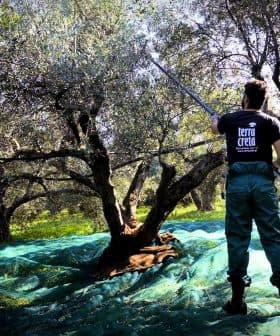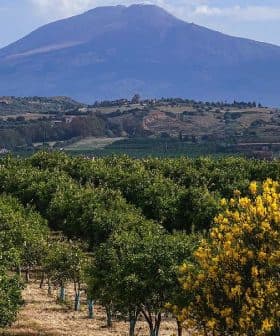Chile on Track to Surpass 19 Percent Growth in Olive Oil Production
Projected to exceed 22,000 tons of olive oil production in 2016, Chile has overcome adverse climate conditions with a savvy combination of efficiency and a sharp focus on quality.
Chile has significantly increased olive oil production, exports, and consumption, with production rising from 19,000 tons in 2015 to an estimated 22,000 tons in 2016. Assisted by market conditions in Europe and decreased output in Spain, Chile has been able to export 76 percent of its olive oil production globally, with a total market representation of 0.8 percent as of 2015.
Rebounding from a period of drought, Chile has steadily increased production, exportation and even consumption of olive oil in the local market. Production rose from 19,000 tons produced in 2015 to an estimated 22,000 tons in 2016.
Assisted by the market conditions in Europe and decreased product output in Spain, Chile has continued to increase its market presence, exporting abroad 76 percent of all olive oil produced, with a total global market representation of 0.8 percent as of 2015.
See Also:Complete Coverage of the 2016 Olive Harvest
Gabriela Moglia, general manager of ChileOliva in an interview with El Mercurio, confirmed this outlook stating that “in the last 10 years, the increase in production in Chile has been explosive, more than 900 percent, through expansion of olive plantations.”
Chile’s positive trajectory since 2011 can be linked to advances in watering and land efficiency. In the ‘Aceite de Oliva Special Farm Edition’ section of El Mercurio, Latin America is described as belonging to the category of “intense, or super intense” systems of planting and harvesting.
Using data from ODEPA, El Mercurio has cited yields in Chile of “12 to 13 tons produced per hectare, in contrast with just 6.5 tons/ha produced (on average) in Europe,” from the use of specialized irrigation.
Moglia from ChileOliva, confirmed this further stating that “one of the principal competitive advantages of the region has been its high performance per hectare obtained by producers working with fertilization and crop management.” Moglia compared the 1,800 – 1,900 liters/ha produced per hectare in Chile with the 700 liters/ha yield in Spain — a key example, she said, of the results of controlled irrigation versus temporal irrigation.
Even on the retail level within Chile, the changes have been notable. Fernando González, a local manager in Jumbo, one of the principal supermarket chains in the country, told reporters from Reportajes 24horas that, “the boom in olive oil consumption (in Chile) started around five years ago…and there are more than 30 brands present in the store today.”
Even though olive oil is readily available from Argentina, Italy, Spain, and the U.S., González concluded that the Chilean market continues to prefer domestic varieties, known for their excellent quality and lauded as a local alternative to other oils.
Increased consumption can also be linked to an overall decline in olive oil prices in Chile per metric ton from 2001 to 2010, cited at $3,013.48 in September 2011, a 23 percent decline from 2008 ($3,914.53) and a 47 percent drop from September 2005, according to figures from FAOSTAT and analysis from El Mercurio.
So what can we expect from Chile in the future?
Market differentiation, emphasis on quality, and market consolidation among consumers in emerging Latam countries, U.S. and China are just a few of several priorities that producers and exporters have on their list to make the most of the current market advantages.
Producers from Chile accounted for 15 entries in the 2016 New York International Olive Oil Competition, where one of the judging panel leaders, Carola Dummer Medina, is also Chilean. Two brands, Olave and Kilkai achieved Gold Awards.









